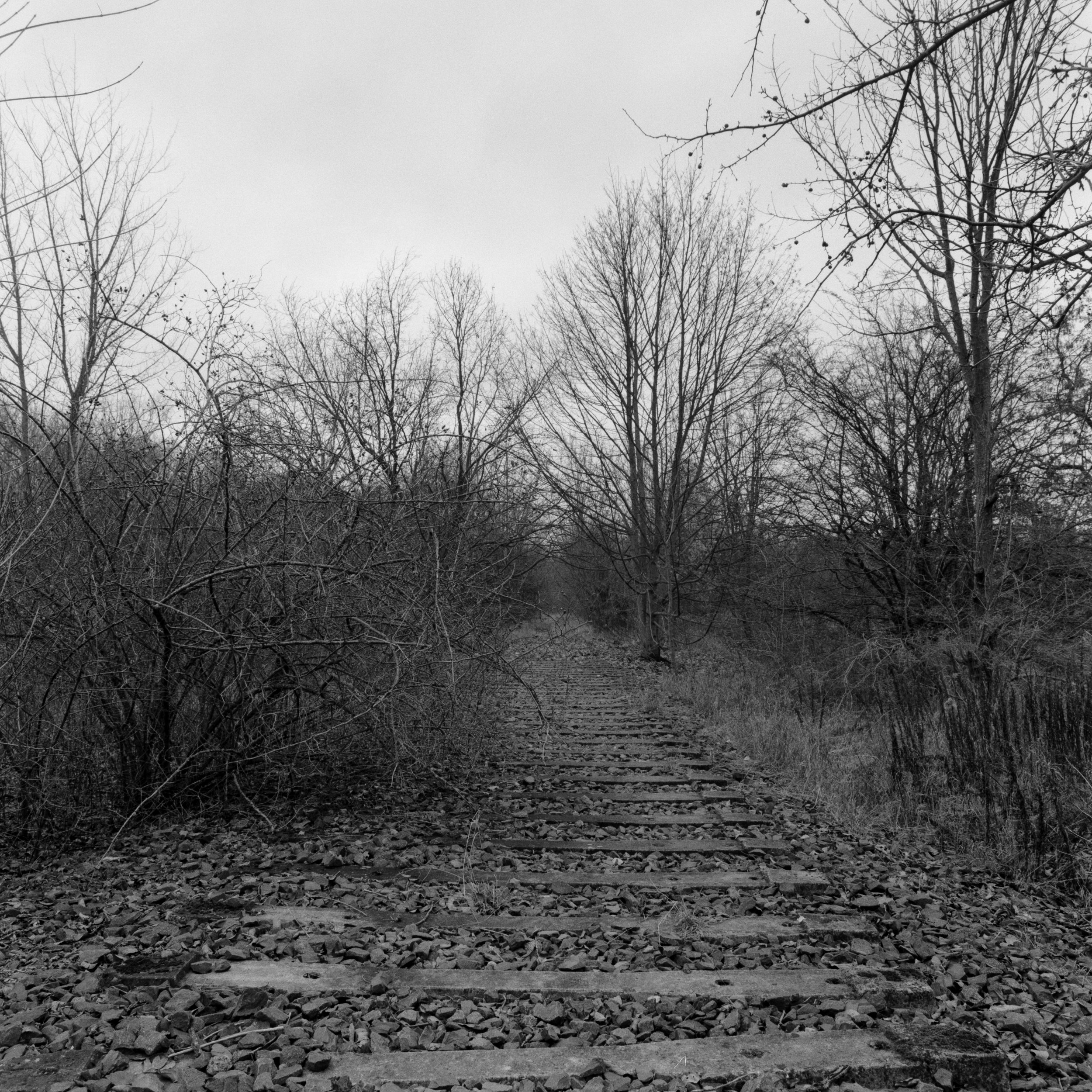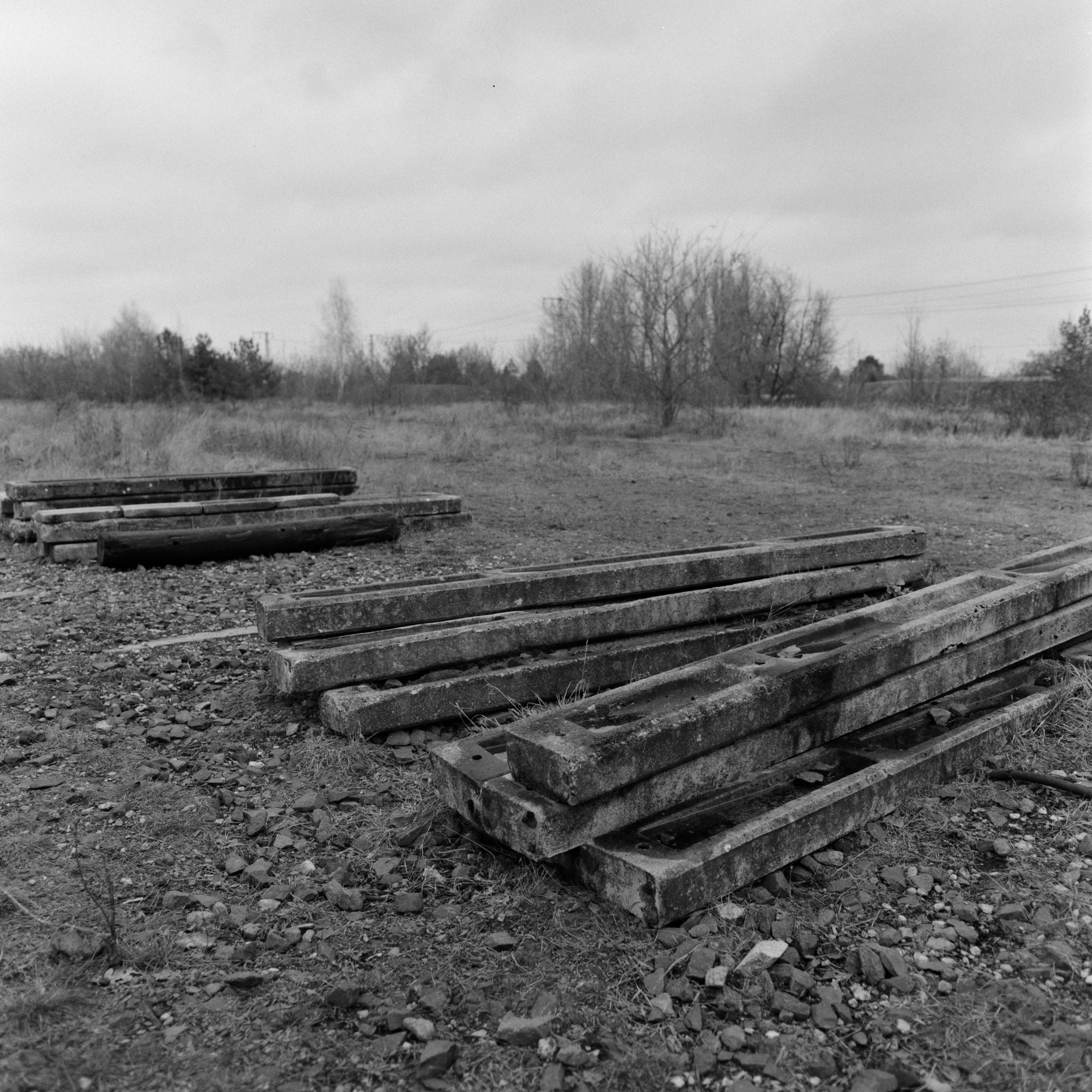Landscape Photography in Bleak Conditions
One of the projects I have been working on for a while now is related to a small nature reserve in Berlin. The area has an interesting history - suffice to say that it is a former freight train station, mostly used by the Soviet army before 1989. The area is still bordering numerous railtracks, so certainly no quiet retreat. But by now, it is thoroughly overgrown by shrubs and trees in some parts, while other parts are still relatively open. Remainders of the former use are tracks made of concrete railway sleepers with the rails actually removed; heaps of both concrete and wooden sleepers; scrap; general feeling of neglect.
Because of its location slightly off the beaten tracks, the area has been adopted by joggers and dog-walkers. I hardly ever met people there who spent time sitting in the shade during the summer. It’s just not that kind of place. But photographers come here, but those seem to be mainly interested in shooting trains rather than the interesting landscape that is evolving here.
I’ve been to the area quite a number of times, sometimes by bike, sometimes by car. Once with a dog-walking group in the middle of summer. Always taking pictures while there. The last time I went there was in the middle of December. With typical middle-of-December Berlin weather. Grey, wet, dark. Bleak.
It was Sunday morning, not too early, so I was not alone there. Dogwalkers and joggers, who else. I was the only photographer as far as I can tell. I had planned to take some panorama shoots with a new camera, but also shoot some black and white film with Zenza Bronic. I carried a backpack with my Zenza, an extra bag for the panorama camera and a heavy tripod.
The panorama camera broke after like two or three shots that I felt would be underwhelming anyway. So I stowed it away and mounted the Zenza Bronica on my tripod instead. I ventured further out in a part of the area that I hadn’t visited before. It is a more open place than the areas I knew before.
At some point, a dogwalking jogger stopped and told me that most photographers were in another part where they could take pictures of the trains, adding that the most important part is to spend time outdoors.
I notice that I take a photo of some dark red rose-hip fruits as if I had loaded a color film. It is so grey and dark that I move on, back to more familiar parts of the area.
The sky seemed to clear up slightly. No, the sun didn’t come out. That was not to supposed to happen. But it got noticeable lighter. The colors were very muted for the most part, with grey and brown the dominating tones. When passing one of the heaps of old wooden railway sleepers I notice the strong scent of the tar oils that were used to make them more durable. And more toxic. Looking at those heaps in summer, you will notice insects there, but there is hardly any fungus or moss helping to digest the wood.
But there is more. While I move my camera and tripod around and point the lens to another heap (of metal and plastic scrap), one of the dog-walkers briefly stops and watches me going about my stuff. He looks at my backpack that is lying a couple of meters from me, and I sincerely hope that his dog doesn’t find it interesting (or, beware, leave a pee-mail for my dog on it).
While I was wondering how it is possible to declare an area a nature reserve and then leave it dotted with heaps of toxic wood, scrap metal and plastic parts (where they cars before?), I decide to take a small detour on my way back to the car. I couldn’t find further shots in the area I ventured into, so concluded my excursion with yet another scrap-heap-shot.
Back at the car, I was relieved to be able to haul my rucksack into the trunk, alongside the smaller camera bag of that bloody broken panorama camera and the heavy tripod. Driving back, I thought that this was just another point in case for the “one camera, one lens, one film” doctrine. I had carried way more than I actually needed or used. Three cameras overall - the Zenza Bronica SQ-Ai with a 50mm wide-angle lens loaded with a role of Ilford HP5 Super should have sufficed. But I also had a YashicaMat 124 G with a couple of frames left on a Lomography Color Negative 400 film, and the broken panorama camera that I won’t name here. And a Sekonic light meter, which I decided that I don’t need as most of the landscape was middle grey anyway, so I metered with with a smartphone app, which worked great: myLightmeter.
While I will continue going to this nature reserve to take pictures, I might reconsider my choice of tools. Shall I stick with black and white film? Shall I stick with square pictures? I don’t know.





